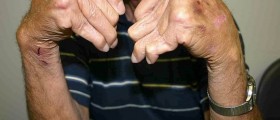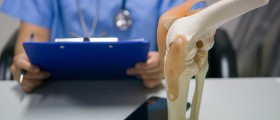
Bone spurs are defined as bony projections that grow and develop along the edges of the affected bones. They are not painful unless rubbed against nerves and bones that are in close contact with bone spurs. These structures are also known under the name of osteophytes. They can affect any bone in the body but the most common sites of their formation include the areas where bones meet each other (joints).
Bone spurs predominantly affect older people. They develop as a consequence of injuries and certain medical conditions that affect joints. For example, the condition generally affects people who are already suffering from arthritis and osteoarthritis.
What Causes Shoulder Bone Spur?
As it has already been mentioned bone spurs affect older people. This is also the case with shoulder bone spurs. The very process of aging is responsible for breaking down the cartilage, the structure that cushions the ends of the bones forming joints. Since the cartilage is destroyed the bones start rubbing against each other which eventually leads to pain and swelling. The condition affects more people who are already suffering from some medical conditions that affect joints such as arthritis, osteoarthritis as well as osteoporosis.
Previous injury to the shoulder is another potential cause of a shoulder bone spur. Namely, after the injury the shoulder bones engage in the process of reparation. Bone damage of any kind leads to reparation process which eventually leads to formation of extra bone tissue in the injured area. Even though the goal of reparation is to restore the lost function and tissue of the injured bone it may sometimes cause more damage that benefit. Initially bone spurs do not cause any symptoms at all but prolonged rubbing against the nearby bones and nerves eventually results in pain, swelling and tenderness of the affected area. In severe cases shoulder movement can be significantly restricted.
Treatment for Shoulder Bone Spur
In case a shoulder bone spur does not cause any symptoms (is asymptomatic) it does not require any treatment. Such bone spurs are usually discovered accidentally during X-ray examination of the particular area done with other purposes.
On the other hand, pain, swelling and tenderness are symptoms that require proper treatment. Patients in whom the condition is associated with arthritis, osteoarthritis or osteoporosis may benefit from treatment of the primary condition. Doctors generally advise plenty of rest and prescribe anti-inflammatory drugs to relieve inflammation and pain. In more severe cases patients may be injected with corticosteroids. Serious deformities and damage to the shoulder joint are treated surgically.

















Your thoughts on this
Loading...